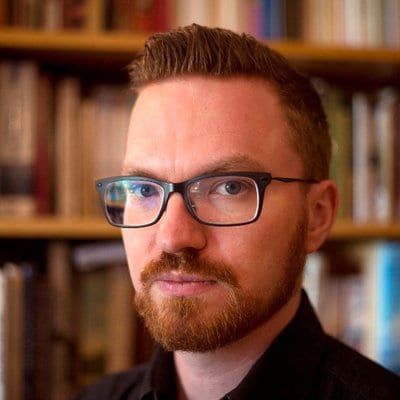As is quite well known, the Palestinian body politic is split between political factions. Historically, the Palestine Liberation Organisation was split between its leftist factions (foremost among them the Popular Front for the Liberation of Palestine) and Fatah, the Palestinian national liberation movement. Since the late 1980s and early ’90s, the Islamist factions increased in popularity, with Hamas, the Islamic resistance movement, leading the way.
Various degrees of competition and animosity have ebbed and flowed over the years, with the rivalry between Hamas and Fatah even degenerating into a short civil war of sorts on the streets of Gaza in 2006 and 2007.
But the reality of the “Gaza coup” was quite the opposite of what is portrayed in Israeli propaganda, which still to this day maintains it was a coup by Hamas over the legitimate Palestinian Authority in Gaza.
In fact, the reality of the 2007 coup was that it was instigated by forces within Fatah (led by by the now-disgraced warlord Muhammad Dahlan) against the elected government of the PA – Hamas swept to power in the democratic elections of 2006.
Naturally, the forces of reaction in region and their international backers stood behind the anti-democratic coup-mongers – namely Israel, Egypt, Jordan and the US. Forces loyal to Hamas managed to nip the planned coup in the bud and still maintain control of the Gaza Strip to this day, although it has by now theoretically handed back power to the unelected PA government in Ramallah after reconciliation with Fatah in 2014.
But the Hamas-Fatah division aside, western analysts too often neglect the wider context of political variety within Palestine. The primary historical reality when it comes to Palestinian division is not that of political factions (as important as these are) but of the more geographical and historic variety.
Since the Nakba of 1948 – the mass ethnic cleansing of Palestine by Zionist militias that established the state of Israel – Palestinians have primarily been divided between three sectors: those in the occupied West Bank and Gaza Strip (occupied by Israel in 1967), those in the diaspora and refugee camps, and those in the territories occupied by Israel in 1948 (i.e. the Palestinian citizens of Israel).
It is this third sector of the Palestinian population that is most often neglected by western commentators when they talk about the Palestinian people.
Too often, British newspapers endorse the Israeli propaganda term “Arab Israelis” when talking about Palestinians who hold Israeli citizenship (including even The Guardian). In fact, when you talk to the Palestinians in Haifa, Jaffa, Nazareth and so forth, overwhelmingly, they identify themselves as one sector of the Palestinian people and refuse the term “Israeli Arabs”. Very few identify themselves as “Israeli”.
And for good reason: as contradictory as it sounds, the reality is that in Israeli law and practice there is no such nationality as “Israeli” – but there is “Jewish nationality”. In 2013, the Israeli high court rejected a request by a group of secular Israeli Jews to have the “nationality” field on their ID documents changed from “Jewish” to “Israeli”. The court ruled that such a move would undermine the “Jewish” character of the state.
The “Palestinians of ’48” (as they are often referred to in Arabic) have their own movements, organizations and political leaders. To oversimplify, their political landscape mirrors that in the wider Palestinian body politic: nationalists, Islamists and leftists. However, the lines between these three over-broad categories often overlap, and, in any case, tend to be oversimplifications in themselves.
Certainly one of the main political leaders among Palestinian citizens of Israel is Raed Salah, a leader of the Islamic Movement. While one part of this movement has stood in Knesset elections for many years, Salah’s faction chooses to boycott the elections.
Even among those Palestinians of differing political persuasions, Salah is widely recognised and respected as a courageous leader of non-violent resistance to Israeli occupation and the wider racist policies of the state. As a religious leader too, Sheikh Salah has led much resistance to increasing Israeli encroachments in Jerusalem against Palestinian religious sites in the whole of Palestine. These encroachments have taken various forms. In July, for example, the Church of Loaves and Fishes near the sea of Galilee was burned out and gutted by suspected ultra-nationalists: Hebrew graffiti was found on site reading “False idols will be smashed.”
At the centre of Israeli occupation policy for years, however, has been a gradual encroachment targeted at the al-Aqsa mosque compound, the location of Islam’s third-holiest site, and a Palestinian national symbol.
It is a centre of religious life for Palestinian Muslims, although increasingly shut off by Israeli occupation forces, who habitually bar, en masse, Palestinians from the city.
Extremist Jewish groups have for years targeted the site and have openly declared their intentions to destroy the Mosque and build a “Third Temple” on the site. The state claims that it would not allow such a thing to happen, but there are many disturbing signs they are not telling the truth about this.
An associate editor with The Electronic Intifada, Asa Winstanley is an investigative journalist who lives in London.
Also Read: The Israeli plot to jail Raed Salah – part 2 of 2
The views expressed in this article belong to the author and do not necessarily reflect the editorial policy of Middle East Monitor.








